Two charged capacitors have their outer plates fixed and inner plates connected by a spring of force constant 'K'. The charge on each capacitor is q. find the extension in the spring at equilibrium
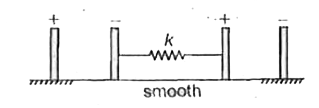
zero
The correct Answer is:A
Step by step video, text & image solution for Two charged capacitors have their outer plates fixed and inner plates connected by a spring of force constant 'K'. The charge on each capacitor is q. find the extension in the spring at equilibrium by Physics experts to help you in doubts & scoring excellent marks in Class 12 exams.
Updated on:21/07/2023Topper's Solved these Questions
- ELECTROSTATIC POTENTIAL AND CAPACITANCE BOOK - AAKASH INSTITUTECHAPTER - ELECTROSTATIC POTENTIAL AND CAPACITANCE EXERCISE - ASSIGNMENT SECTION - B
38 Videos
- ELECTROSTATIC POTENTIAL AND CAPACITANCE BOOK - AAKASH INSTITUTECHAPTER - ELECTROSTATIC POTENTIAL AND CAPACITANCE EXERCISE - ASSIGNMENT SECTION - C
53 Videos
- ELECTROSTATIC POTENTIAL AND CAPACITANCE BOOK - AAKASH INSTITUTECHAPTER - ELECTROSTATIC POTENTIAL AND CAPACITANCE EXERCISE - EXERCISE
20 Videos
- ELECTROMAGNETIC WAVESBOOK - AAKASH INSTITUTECHAPTER - ELECTROMAGNETIC WAVESEXERCISE - ASSIGNMENT SECTION - D Assertion-Reason Type Questions
25 Videos
- GRAVITATION BOOK - AAKASH INSTITUTECHAPTER - GRAVITATION EXERCISE - ASSIGNMENT SECTION - D (ASSERTION-REASON TYPE QUESTIONS)
16 Videos
Similar Questions
Two charged capacitors have their outer plates fixed and inner plates connected by a spring of force constant k. The magnitude of charge on each capacitor is q and sign of charge on each capacitor is q and sign of charge is shown in figure. Find the extension in the spring at equilibrium.
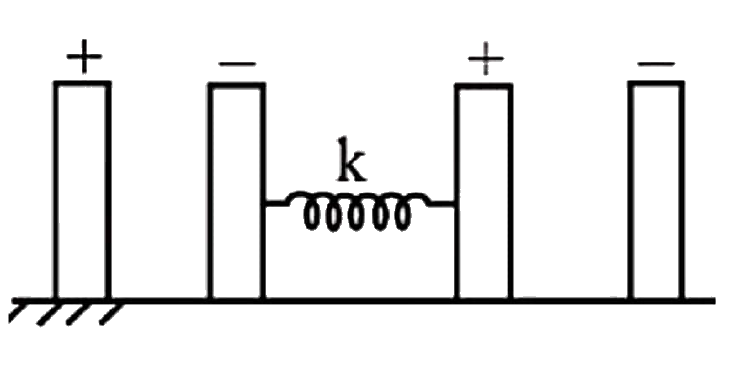
View SolutionA parallel plate capacitor having plate area A and separation between the plates d is charged to potential V.The energy stored in capacitor is ....???
View Solution
Knowledge Check
If the two plates of the charged capacitor are connected by a wire, then
Apotential will becomes infinteBcharge will becomes infiniteCcapacitor will get dischargedDcharge will becomes double that of earlier oneThe plates each of area A of a parallel plate caoacitor are given charges Q and −Q. The plates are joined by a non-conducting spring of force constant k. The natural length of the spring is d, the inital separation between the plates. The left plate is connected to a vertical wall through a massless non-conducting rope and the right plate is connected to a block of mass m through similar rope. Assume the pulley to be massless, neglect dielectric effect of the spring and Q2<2mAε0g
If T be the time period of oscillation, then
 AT>2π√mkBT<2π√mkCT=2π√mkDT will depend on Q.
AT>2π√mkBT<2π√mkCT=2π√mkDT will depend on Q.Two parallel plate capacitors with area A are connected through a conducting spring of natural length 1 in series as shown. Plates P and save fixed positions at separation d. Now the plates are connected by a battery of emfξ as shown. If the extension in the spring in equilibrium is equal to the separation between the plates, find the spring constant k.
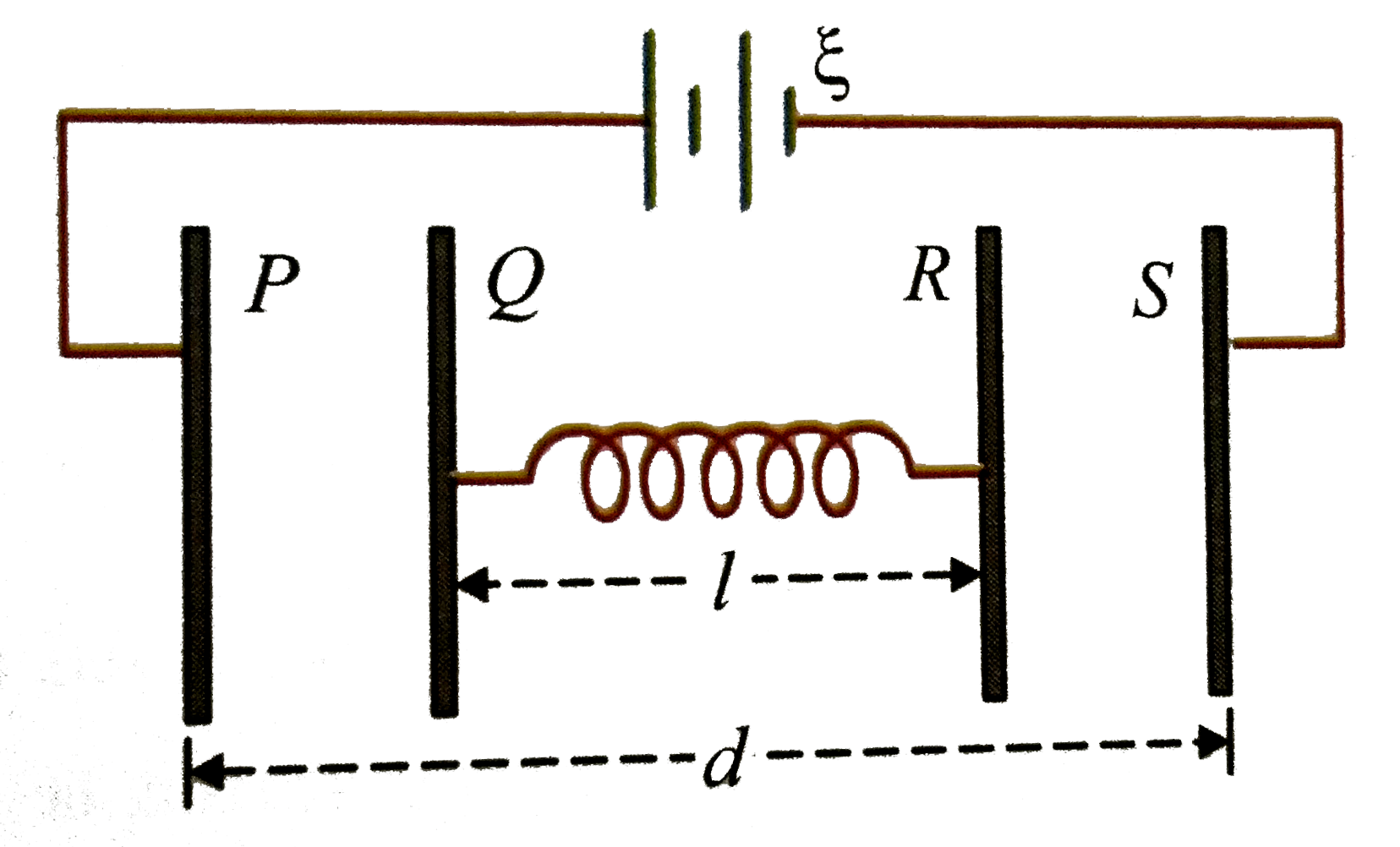 .Ak=278Aε0ξ2(d−l)3Bk=278Aε0ξ(d−l)3Ck=288Aε0ξ(d−l)3Dk=278Aε0ξ(d−l)2
.Ak=278Aε0ξ2(d−l)3Bk=278Aε0ξ(d−l)3Ck=288Aε0ξ(d−l)3Dk=278Aε0ξ(d−l)2
A parallel plate capacitor has its two plates connected to an ideal spring of force constant K. Relaxed length of spring is L and it is made of non conducting material. The area of each plate is A. The capacitor has a charge q0 on it. To discharge the capacitor through the resistance R, switch S is closed.
If the time constant of the circuit is very large and discharge process is very slow, how much heat will be dissipated in the resistance? Assume that there is no friction and the plates always remains parallel to each other.
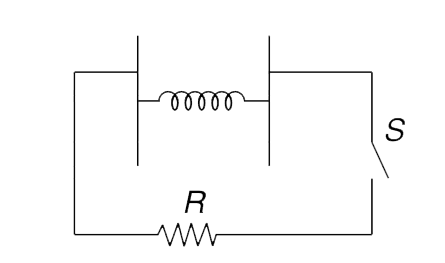
View SolutionA battery is used to charge a parallel plate combination of two identical capacitors. If the potential difference across the battery is V and the total charge Q flows through the battery during the charging process then 1) The charge on each capacitor is Q/2 and the potential of each capacitor is V/2 2) The charge on each capacitor is Q and the potential of each capacitor is V 3) The charge on each capacitor is Q/2 and the potential of each capacitor is V 4) The charge on each capacitor is Q and the potential of each capacitor is V/2
View SolutionA paallel plate capacitor with air as a dielectric is arranged horizontally. The lower plate is fixed and the other connected with a perpendicular spring. The area of each plate is A and mass of uppar plate is m. In the steady position, the distance between the plates is d0. When the capacitor is connected with a battery of emf V, a new equilibrium appears, with distance between the plate as d.
(a) find the spring constant k.
(b) what is the maximum voltage for a given k in which an equilibrium is possible?
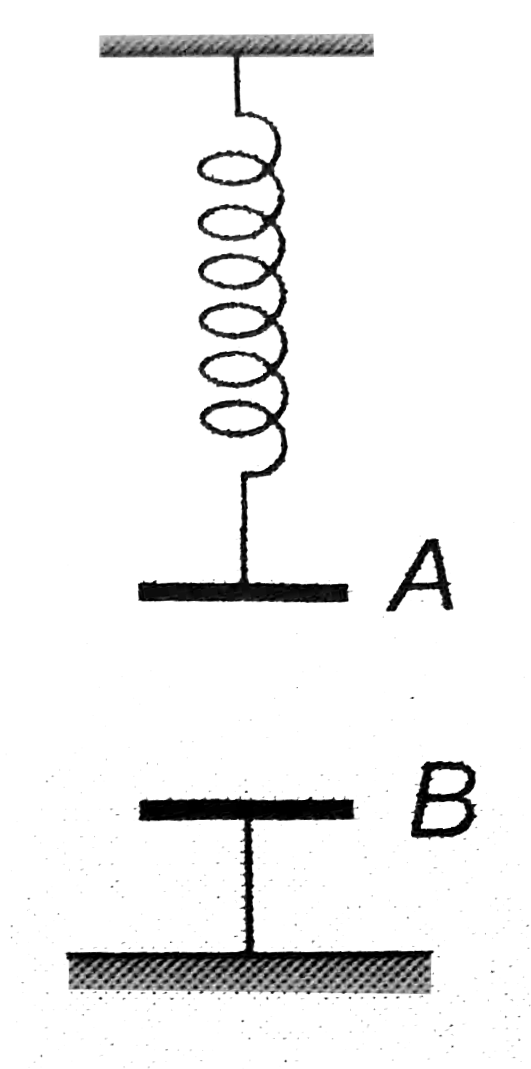
View SolutionA dielectric slab is inserted between the plates of a capacitor. The charge on the capacitor is Q and the magnitude of the induced charge on each surface of the dielectric is Q'.
View SolutionA parallel plate capacitor is charged. If the plates are pulled apart
View Solution
